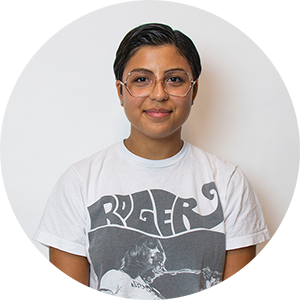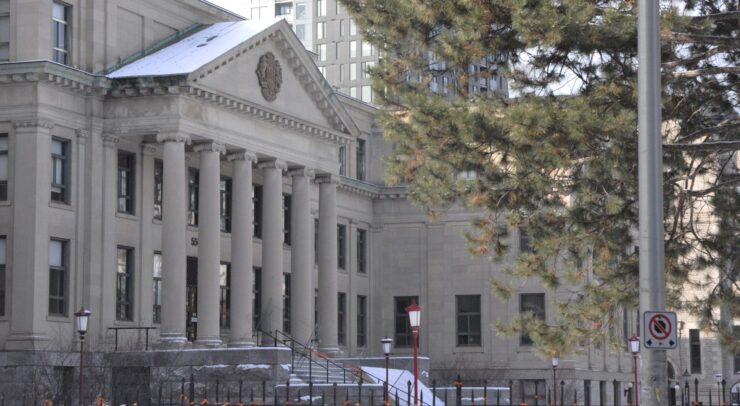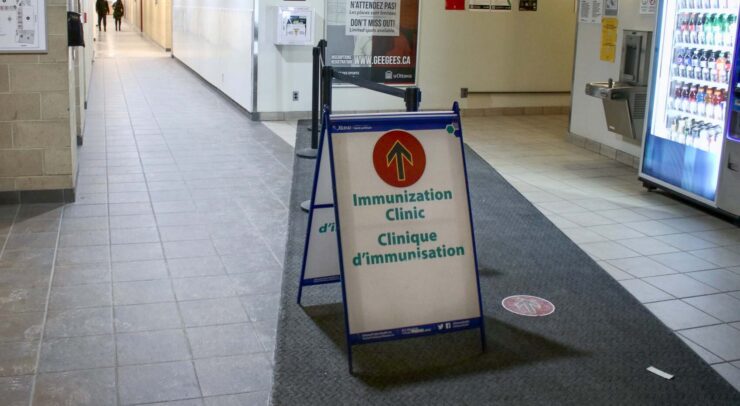Fulcrum writers share insights and behind the scene information on some of the year’s biggest stories
As the year comes to an end, we decided to look back on significant stories the Fulcrum published in 2021. Instead of simply republishing the stories, we thought we’d do something different and offer readers a behind-the-scenes look at how some of the year’s biggest stories came to be.
To do so, members of the editorial board were interviewed to shed some light on the processes that went into writing and bringing these stories to the University of Ottawa community.
The class action proceeding launched by the victims of disgraced physician Vincent Nadon was arguably the biggest story to pass through the Fulcrum’s second-floor newsroom at 631 King Edward Avenue in 2021.
The affidavits in the proceeding alleged the U of O was made aware of Nadon’s inappropriate conduct of a sexual nature in about 1995 through complaints by two female students. According to those affidavits, the University told both women in a letter that it would not pursue any formal investigation due to a lack of physical evidence of any wrongdoing by Nadon.
The proceeding’s motion also shared disturbing details of the former physician’s alleged crimes and the trauma they caused to the victims. This story was written by editor-in-chief Charley Dutil and news editor Zoë Mason. The following is Mason’s recollection of the process.
How did the pitch come to you?
Someone working on the proposed class-action lawsuit at the time had read one of our stories regarding the closure of the Marie-Curie clinic. Sean Brown, one of the lawyers working on the lawsuit, reached out to us to see if the Fulcrum would be interested in doing a larger story about the lawsuit, which of course is intimately tied to the University and the former University of Ottawa Health Services (UOHS).
Did you immediately know the angle you wanted to take with this story?
Absolutely. Everybody knows about the Nadon story on this campus, or most people do, anyway. The story they knew was about Nadon and the crimes he committed against his patients; this story was going to be about what has happened to them since, and why they hold the University responsible, at least in part, for what has happened to them.
What was the process of finding sources? How did you decide on which sources to reach out to?
Since Brown reached out to us, we had a ton of material that he was able to provide us with. We did also get the chance to speak with Ellina Rabbat, one of the women who was a victim of Nadon. Since the nature of the story is touching on and a source of personal trauma, we weren’t sure anyone would be willing to talk to us at all, but as I said, I think we really wanted this story to be less about Nadon and more about the people whose lives he affected. So I think it was really important that Rabbat agreed to contribute to the story.
Were there any roadblocks that you hit in the reporting process?
There really weren’t any roadblocks with this story. There was a lot of material we could not include, so we had to be very mindful of that. It can take an emotional toll, to immerse yourself in the detailed documents outlining allegations of such reprehensible crimes. And of course, there were a lot of legal hoops to jump through. All that said, I don’t think there was ever a point where we really felt like our ability to tell the story was going to be impeded or compromised in a significant way.
What was your process in writing this story?
The first thing we did was talk to Brown. After that, Charley and I each read the 300 or so pages of material that he sent us, took notes, and spoke to each other at length about the details we felt we needed to include or emphasize. The story was written in chunks, with the largest piece of it written after our conversation with Rabbat. After talking to her, we were determined to have the article out as soon as possible.
Did any information come to light during the writing process that changed the angle of the story?
I think Rabbat’s interview really changed this story by adding a very human perspective to a story that could easily have been dense and technical. She cares so much about finding ways to prevent things like this from happening to other women, and I think it really comes through in the piece.
In early 2021, the Fulcrum’s editor-in-chief took up walking as a way to pass the time while in lockdown. While on one of his long walks, he received an email that would end up leading to one the Fulcrum’s most important stories of the year. Here’s the story of how the Fulcrum discovered that the information of over 100 University of Ottawa students who had used the University of Ottawa Students’ Union (UOSU) Food Bank was publicly available on the union’s website.
How did this pitch come about?
Over the holiday break, I was out on a walk and I received an email from a concerned student who had discovered that the names and personal information of students who used the UOSU Food Bank were publicly available to anyone who clicked “see previous answers” on the Google Form to order from the Food Bank. This was obviously problematic, and as soon as I got home I started sourcing the story and doing my research.
Did you immediately know the angle you wanted to take with this story?
Yes, so this data being public could potentially jeopardize the privacy of students’ whose names and information were on the form. So this was the main angle we chose. We also wanted to get answers as to why this list was public and what would be done by the union and the Food Bank to rectify this situation.
What was the process of finding sources like for you? How did you decide on which sources to reach out to?
The first step once I got home, was to go look at the data online. Once I saw how detailed the information was, I was frankly alarmed and concerned for the students whose names and information were on the Google Form.
So I reached out to two people I trusted on the editorial board and tasked them with drafting a mass email to reach out to every student whose name was found on the form so they could be informed about the data’s public availability and to also field reactions.
While they were doing that, I contacted the Food Bank and the UOSU’s then advocacy commissioner Tim Gulliver to inform them that the information was public on their website and to find out why that was the case.
Were there any roadblocks that you hit in the reporting process? What were they?
Not really, we didn’t have to wait long to get answers. There were over 100 names on the list so people got back to our mass email fast with reactions. A challenge we did face, was to deal with students who were in shock and upset that this information was publicly available.
In 2021, one of the Fulcrum’s most interesting sections was its science and tech section. Hannah Sabourin and Emma Willimas were able to transform complicated scientific research and break it down in their own unique way to make it easy for all students to comprehend and appreciate.
In November, Williams was able to live out every kid’s paleontologist fantasy when she interviewed Jordan Mallon for her Dinosaurs and digs: Everything you need to know article.
How did the pitch come to you?
The pitch came to me as I was looking through the science experts page of the Canadian Museum of Nature directory. I saw that Jordan [Mallon] was a research scientist and paleontologist. I wanted to ask him a bunch of questions about dinosaurs and digs because they genuinely fascinate me.
Did you immediately know the angle you wanted to take with this story?
I honestly don’t always know the angle to each story (this one included). I know the general outline and questions I need to ask during my interviews but everything tends to come together while I’m writing.
What was the process of finding sources like for you? How did you decide on which sources to reach out to?
Most of the time I write stories about recent studies published by professors here at the University of Ottawa, so the research paper is one of the sources, and the second and third ones are usually the lead authors or professors.
Were there any roadblocks that you hit in the reporting process? What were they?
I like writing so there aren’t too many roadblocks. I would say that sometimes I get caught up in the scientific jargon and I need to refer to a few sources to make sure I’m getting it right.
What was your favourite part of this article?
My favourite part about this piece and all my others are definitely the interviews. I really enjoy listening and speaking with all these scientific experts. They are all extremely knowledgeable and I get to learn so much each time I write an article.






